Life Cycle of Stars
Stars are gigantic spheres of extremely hot gases, powered by thermonuclear reactions that release an immense amount of energy. The sun in our solar system is a star and is one of many billions of stars in the universe.
The life of a star involves 4 main evolutionary stages:
- Protostar
- Pre-main Sequence Star
- Main Sequence Star
- Post-main Sequence Star
The animation below explains the 4 main stages a star goes through during its life cycle.
Interstellar Medium
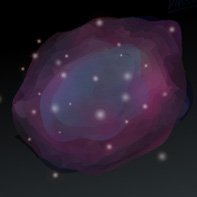 The space between the stars is not empty. It is filled with gases and dust particles referred to as interstellar medium or interstellar matter. Gases make up most of the interstellar medium with the dust accounting for a very small amount of the total mass. The gas is mostly hydrogen and the dust contains tiny grains of silicates, graphite and iron. Interstellar matter clump together to form clouds called nebulae. It is in these clouds or nebula that stars are formed.
The space between the stars is not empty. It is filled with gases and dust particles referred to as interstellar medium or interstellar matter. Gases make up most of the interstellar medium with the dust accounting for a very small amount of the total mass. The gas is mostly hydrogen and the dust contains tiny grains of silicates, graphite and iron. Interstellar matter clump together to form clouds called nebulae. It is in these clouds or nebula that stars are formed.
Protostar
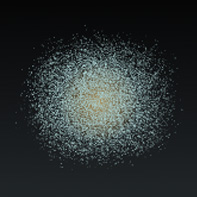 As the dust and gas clouds become denser and acquire more mass, the gravitational interactions between the particles can overcome the outward pressures due to kinetic energy. This creates a gravitational instability and the causes a gravitational collapse of the cloud. This is when the clouds collapse into small bodies under the action of their own gravity. During the collapsing or contraction of the cloud the material at the centre of the cloud heats up due to the transfer of gravitational potential energy into thermal energy. This hot core at the centre of the collapsing cloud is called a Protostar.
As the dust and gas clouds become denser and acquire more mass, the gravitational interactions between the particles can overcome the outward pressures due to kinetic energy. This creates a gravitational instability and the causes a gravitational collapse of the cloud. This is when the clouds collapse into small bodies under the action of their own gravity. During the collapsing or contraction of the cloud the material at the centre of the cloud heats up due to the transfer of gravitational potential energy into thermal energy. This hot core at the centre of the collapsing cloud is called a Protostar.
Pre Main Sequence
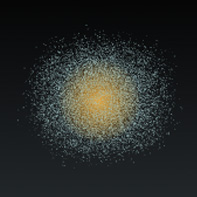 The protostar accumulates more gas and dust increasing in density and temperature. The thermal energy generated heats up the collapsing cloud and increases the internal pressure. A point is reached where the outward force generated from the internal pressures can resist the gravitational collapse of the cloud, immense heat is generated and the protostar becomes luminous. The protostar at this point becomes a pre main sequence star.
The protostar accumulates more gas and dust increasing in density and temperature. The thermal energy generated heats up the collapsing cloud and increases the internal pressure. A point is reached where the outward force generated from the internal pressures can resist the gravitational collapse of the cloud, immense heat is generated and the protostar becomes luminous. The protostar at this point becomes a pre main sequence star.
Main Sequence Star
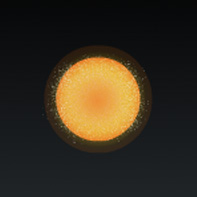 If the mass of the protostar exceeds about 0.08 of the sun’s mass then the gravitational contraction provides sufficient transfer of gravitational potential energy to kinetic energy for nuclear fusion. The star produces energy which makes it shine. Equilibrium is achieved between the inward gravitational force from the tremendous mass of outer layers and the outward forces from the internal pressures. The star is now on a stage of its life called the main sequences phase and is thus called a main sequence star. This is the longest phase of the star’s life and all the energy the star emits comes from the nuclear conversion of hydrogen to helium in its core. The time a star spends on the main sequence stage depends on its mass. Massive stars with enormous masses burn very brightly and use up their fuel a lot quicker and spend less time on the main sequence stage compared to less massive cooler stars. Our sun is a yellow dwarf star and will spend approximately 10,000 million years on the main sequence phase.
If the mass of the protostar exceeds about 0.08 of the sun’s mass then the gravitational contraction provides sufficient transfer of gravitational potential energy to kinetic energy for nuclear fusion. The star produces energy which makes it shine. Equilibrium is achieved between the inward gravitational force from the tremendous mass of outer layers and the outward forces from the internal pressures. The star is now on a stage of its life called the main sequences phase and is thus called a main sequence star. This is the longest phase of the star’s life and all the energy the star emits comes from the nuclear conversion of hydrogen to helium in its core. The time a star spends on the main sequence stage depends on its mass. Massive stars with enormous masses burn very brightly and use up their fuel a lot quicker and spend less time on the main sequence stage compared to less massive cooler stars. Our sun is a yellow dwarf star and will spend approximately 10,000 million years on the main sequence phase.
Post Main Sequence Star
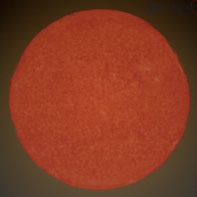 Towards the end of the main sequence stage all the hydrogen in the core of the star is exhausted and transformed to inert helium. Without the hydrogen the thermonuclear reactions in the core stop and gravity compresses the core to a smaller size. Surrounding the core is a layer of hydrogen; gravitational contraction provides enough energy for nuclear fusion of the hydrogen in this layer. The outward pressure from the nuclear reaction prevents the star from collapsing and makes it expand to several hundred times its former size. Due to the expansion of the outer layers the energy from the hydrogen layer is spread over a larger surface area resulting in a lower surface temperature and a shift in the stars light output to a red wavelength. The star has now become a Red Giant.
Towards the end of the main sequence stage all the hydrogen in the core of the star is exhausted and transformed to inert helium. Without the hydrogen the thermonuclear reactions in the core stop and gravity compresses the core to a smaller size. Surrounding the core is a layer of hydrogen; gravitational contraction provides enough energy for nuclear fusion of the hydrogen in this layer. The outward pressure from the nuclear reaction prevents the star from collapsing and makes it expand to several hundred times its former size. Due to the expansion of the outer layers the energy from the hydrogen layer is spread over a larger surface area resulting in a lower surface temperature and a shift in the stars light output to a red wavelength. The star has now become a Red Giant.
 Within the red giant further complex nuclear reactions take place at different depths. The core becomes denser and hotter and the outer layers flow out, cool and surround the core to form a planetary nebula. Over time this material disappears and the the core that remains cools to become a White Dwarf.
Within the red giant further complex nuclear reactions take place at different depths. The core becomes denser and hotter and the outer layers flow out, cool and surround the core to form a planetary nebula. Over time this material disappears and the the core that remains cools to become a White Dwarf.
Brown Dwarf
The development route a pre main sequence star takes depends on its mass. In order for nuclear reactions to start the star needs to exceed a certain mass. If a protostar reaches a mass less than about 0.08 the mass of our sun then the transfer of gravitational potential energy to kinetic energy during contraction is not sufficient enough for nuclear reactions. In this case the pre main sequence star becomes a brown dwarf. A brown dwarf is like an enormous planet rather than a star. It has low luminosity and cool temperatures due to the only energy source being gravitational potential energy.
